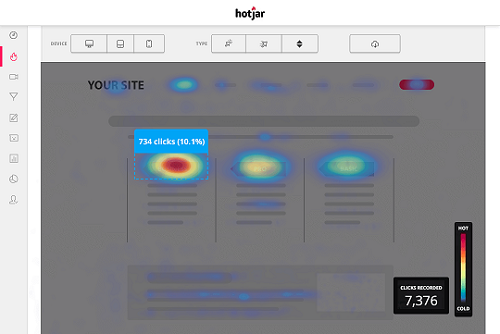Twitter Updates its Direct Messages System
Twitter has recently introduced a new feature that gives the user the option to send a direct message (DM) to users who don’t follow
them. This is a change from the previous direct messaging system which only let
users send direct messages to people who mutually followed each other. Although
it may lead to more spam messages received for some people, it also could be
beneficial to some brands and companies who use Twitter for customer service
issues or as a marketing tool.
This new direct message feature has led to discussions of whether Twitter will launch a
standalone direct-message application separate from the Twitter app, showing
more similarity to WhatsApp messenger or Facebook messenger app. Twitter has
also been learning from the success of Snapchat, which has managed to engage
many users through their instant picture messaging platform. Twitter’s latest app update, specifically for Android Tablet users, appears to have borrowed
heavily from Snapchat by providing users the ability to draw on images that
they tweet, or illustrate their own whole image.
Currently, the direct messages are used a lot for spam
messages, however, they do also have more valuable uses for brands and
companies. Direct messages still work in a similar way to tweets, only allowing
a maximum of 140 characters for each one sent, but they have the added benefit
of being private. This means the new change to the DM system will be very
beneficial for brands that use Twitter as a customer service channel.
If these brands allow their accounts to accept DMs from anyone (and not just those that they also follow) they will then be able to receive private customer service messages from customers, even if they aren’t already following them. This will allow customers with problems, that they wish for customer service to solve, to send their queries over a private channel instead of publicly broadcasting it across the net. This can benefit some companies because it moves complaints out of the public eye, as they do not necessarily want all their customers to see that someone has disapproved of their service.
If these brands allow their accounts to accept DMs from anyone (and not just those that they also follow) they will then be able to receive private customer service messages from customers, even if they aren’t already following them. This will allow customers with problems, that they wish for customer service to solve, to send their queries over a private channel instead of publicly broadcasting it across the net. This can benefit some companies because it moves complaints out of the public eye, as they do not necessarily want all their customers to see that someone has disapproved of their service.
However, at times having customer service in the public eye
can be beneficial because it means that a customer service channel does not
have to respond to every individual query as others might be able to search
through the hashtags for a similar problem finding the answer without sending in a query themselves. This is one of the benefits of
Twitter – that it is in the public eye and conversations are shared in a public
manner making them searchable. If these conversations are moved into a private
arena, then it takes away some of the value of the site.
The move is likely to have been introduced as a method of allowing brands and
businesses to receive private messages from their followers, as opposed to
allowing companies or individuals to spam Twitter users. The move comes
following Twitter’s recent partnership with the TV provider Comcast, in an
attempt to promote its service and create a new form of social TV. This new DM feature allows Twitter users who use features like this to communicate with brands and
companies without being followed by the brand itself.
However, this new feature will only work if a user has opted
in to allow messages to be sent to them by any user, which might be important
for your brand. Yet the average Twitter user will not want an influx of spam
messages into their individual direct message inboxes, so if you do not want to
be sent unwanted inbox messages make sure you check your Twitter settings and
be sure that “Receive direct messages from any follower” is unchecked.
What do you think?
Do you think it is beneficial to be able to send Direct Messages to any user on Twitter?
Twitter Updates its Direct Messages System
![]() Reviewed by Anonymous
on
Tuesday, October 22, 2013
Rating:
Reviewed by Anonymous
on
Tuesday, October 22, 2013
Rating:














 Entrepreneur, international speaker on Social Media Marketing. First one in the UK to write and speak in conferences about Twitter as a marketing tool. Consultant to Corporate Companies, Government Organizations, Marketing Managers and Business Owners.
Entrepreneur, international speaker on Social Media Marketing. First one in the UK to write and speak in conferences about Twitter as a marketing tool. Consultant to Corporate Companies, Government Organizations, Marketing Managers and Business Owners. Aspiring novelist with a passion for fantasy and crime thrillers. He hopes to one day drop that 'aspiring' prefix. He started as a writer and soon after he was made Executive Editor and Manager of the team at Social Songbird. A position he held for 5 years.
Aspiring novelist with a passion for fantasy and crime thrillers. He hopes to one day drop that 'aspiring' prefix. He started as a writer and soon after he was made Executive Editor and Manager of the team at Social Songbird. A position he held for 5 years. Musician, audio technician, professional tutor and a Cambridge university English student. Interested in writing, politics and obsessed with reading.
Musician, audio technician, professional tutor and a Cambridge university English student. Interested in writing, politics and obsessed with reading. Recently graduated with a BA in English Literature from the University of Exeter, and he is about to study an MA in Journalism at the University of Sheffield. He is an aspiring journalist and novelist; in his free time he enjoys playing chess, listening to music and taking long walks through nature.
Recently graduated with a BA in English Literature from the University of Exeter, and he is about to study an MA in Journalism at the University of Sheffield. He is an aspiring journalist and novelist; in his free time he enjoys playing chess, listening to music and taking long walks through nature. Lucy is an undergraduate BSc Politics and International Relations student at the London School of Economics and Political Science.
Lucy is an undergraduate BSc Politics and International Relations student at the London School of Economics and Political Science. Anna Coopey is a 4th year UG student in Classics at the University of St Andrews in Scotland. She is a keen writer and researcher on a number of topics, varying from Modern Greek literature to revolutionary theory.
Anna Coopey is a 4th year UG student in Classics at the University of St Andrews in Scotland. She is a keen writer and researcher on a number of topics, varying from Modern Greek literature to revolutionary theory.
